Description
Genus: Boletus
Species: subcaerulescens
- Species 2: aurantioruber
Common Name: “Almost Bluing King Bolete”
Tells: Stem has white netting high, darkening lower down & from handling. Reddish-brown, oft-wrinkled cap. Creamy pores age to yellow & may stain blue-gray that turns brownish.
Other Information: White cap flesh can have a reddish-brown zone near the cap skin and/or the tubes, & often has a pleasant smell (lemony) and/or taste (nutty-sweet). Prefers spruce. White mycelium. Note that the bluing is not a reliable feature, and thus should be used more for final confirmation than an effort to narrow things down.
Science Notes: 2022 Whole genome testing has merged B. aurantioruber into B. subcaerulescens.
Edibility: Choice, with no question about it.
CHEMICAL TESTS:
- NH4OH (Ammonia): Cap skin turns bluish green, then bright orange with a dull gray-green perimeter, then yellow-orange. Cap flesh does not react.
- KOH: Cap skin turns amber-orange. Cap flesh does not react.
- FeSO4 (Iron Salts): Cap skin does not react. Cap flesh turns pale greenish.
Links:
 |
0 |  |
301 |  |
161 |  |
157 |

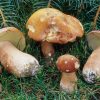
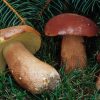
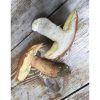
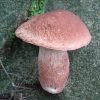
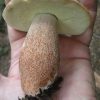
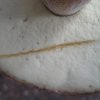
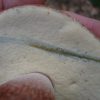
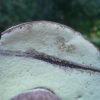
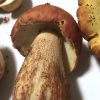
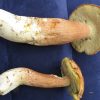
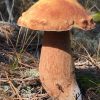
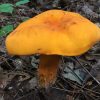
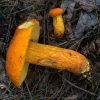
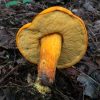
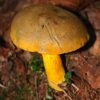
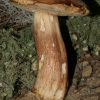
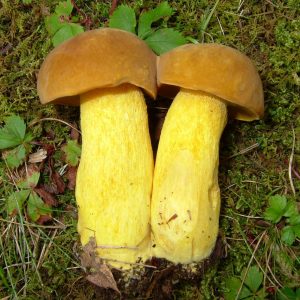
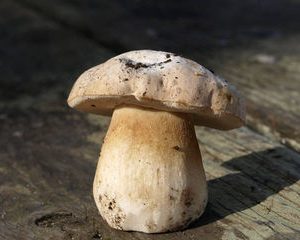
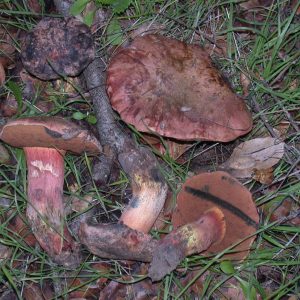
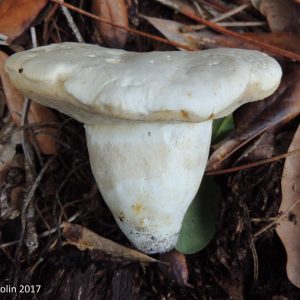
Got something to discuss?
I found 2 Boletes that turned a dark blue when I cut the stems off for Spore printing. Are these EDIBLE? New to this. Open minded. Thanks
Mid west US which other boletes stain dark blue?